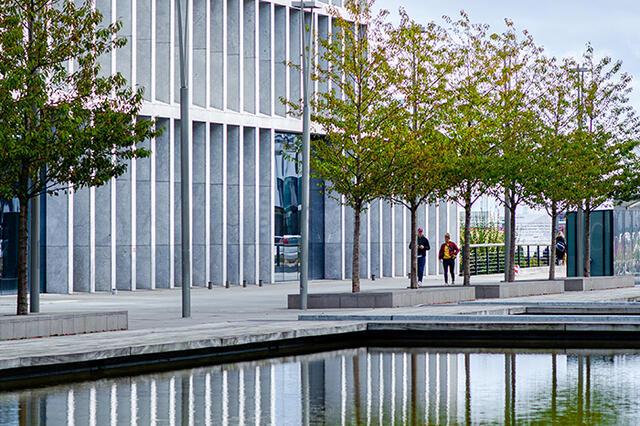How smart buildings will win the race to net zero
19 April 2021How smart buildings will win the race to net zero
19 April 2021Intelligent building systems that create smart buildings give commercial property an opportunity to become greener, and more cost-efficient.
Buildings are becoming smarter. Like cars, they will soon maximise the capabilities of automated systems that gauge exactly what resources are being used, and exactly when maintenance checks and repairs are required. And just as cars are becoming inherently greener, thanks to the development of electric vehicles, buildings must also take advantage of new technologies if they are to reach Net Zero targets.
To meet climate change targets in line with the Paris Agreement and legislated by UK Government, by 2050 every building will need to hit the Net Zero energy-use reduction goal to avoid the worst impacts of climate change and global warming. Targets have also been set for all new buildings to reach Net Zero by 2030. Many landlords and institutional investors have also set their own goals.
Buildings already account for 30% of global energy consumption and 28% of energy-related carbon emissions. Yet it is cities and their buildings that fuel the global economy and are crucial to the economic and social recovery from Covid-19. So, it’s incumbent upon the real estate industry not only to build back better, but also to build back greener. Therefore, it must build back smarter. In this quest, cloud-based, internet-of-things (IoT)-linked intelligent building technologies are proving a vital tool. Smart cities that feature intelligent smart building operating systems could achieve up to 50% savings in existing buildings that are otherwise inefficient.
Measure what you treasure
The harnessing of IoT smart building technologies means it’s possible to optimise assets for Net Zero. Not only delivering carbon reduction, but also cost savings. Through live asset-level monitoring and automation of electricity, water, temperature, lighting, air quality, waste and even occupiers’ transport modes, it’s possible for property managers and building consultants to create efficiencies.
Smart building platforms have the power to connect the equipment monitoring of multiple assets across a portfolio into one centralised system that aggregates all data. This is not only an important tool for sustainability and ESG reporting, but also means that remote monitoring and automated optimisation can take place at a portfolio level.
Unlike old-style legacy building management systems, smart building software links into building services, sensors and smart meters remotely using IoT connectivity, allowing cloud-based data monitoring that promotes energy efficiency and asset optimisation.
Intelligent buildings can monitor and optimise energy use by identifying at a granular level exactly where improvements can be made. By making use of machine learning to set rules for heating, hot water, and lighting, for example, smart buildings can then implement automated optimisation as part of this process. So, instead of simply being aware of temperature spikes or increased water usage, owners can take advantage of intelligence that identifies, and also resolves issues, implementing changes automatically.
The quid pro quo of occupier engagement
Achieving engagement with the people occupying the building is a fundamental element for success. Smart building solutions enable a whole-building approach. Owners and occupiers working together to make the built environment more efficient. This can be made attractive to occupiers with the quid pro quo of cost efficiencies. By linking their sensors, IoT devices and smart meters to a central intelligent building operating system, occupiers can streamline energy use. This inherently reduces all stakeholders’ energy costs, as well as aiding building owners in the quest for Net Zero and reduced environmental impact.
Track behavioural change
Occupier engagement mean an intelligent building operating system could also be used to track Carbon Trust’s Scope Three details such as how people are getting to and from the building. This could be achieved via the installation of sensors in the cycle-store, or a touch-screen system in reception for occupiers to record transport modes to and from the workspace. The average person can save 6% of their annual carbon footprint by switching to cycling, so this kind of behavioural change would mean reduced Scope Three emissions. These are often a major carbon-contributing factor in the wider ecosystem.
Smart building technology also allows for optimal parameters to be set with regard to lighting, HVAC or water usage, for example. When previously agreed levels are exceeded, occupiers and facility managers are notified. This which means both are working in partnership to keep within set usage targets over the course of a building’s occupancy.
Occupiers are reconsidering the future use of their workplaces while investors seek greater efficiencies to maintain lifecycle returns. Combined with the challenge of meeting Net Zero carbon reduction targets, commercial properties need to adopt the best building automation solutions to meet these challenges.
To find out more about how to make your buildings intelligent, read more about Workman's IBOS platform.
By James Hallworth, Senior Associate, Workman. View the original blog here.
